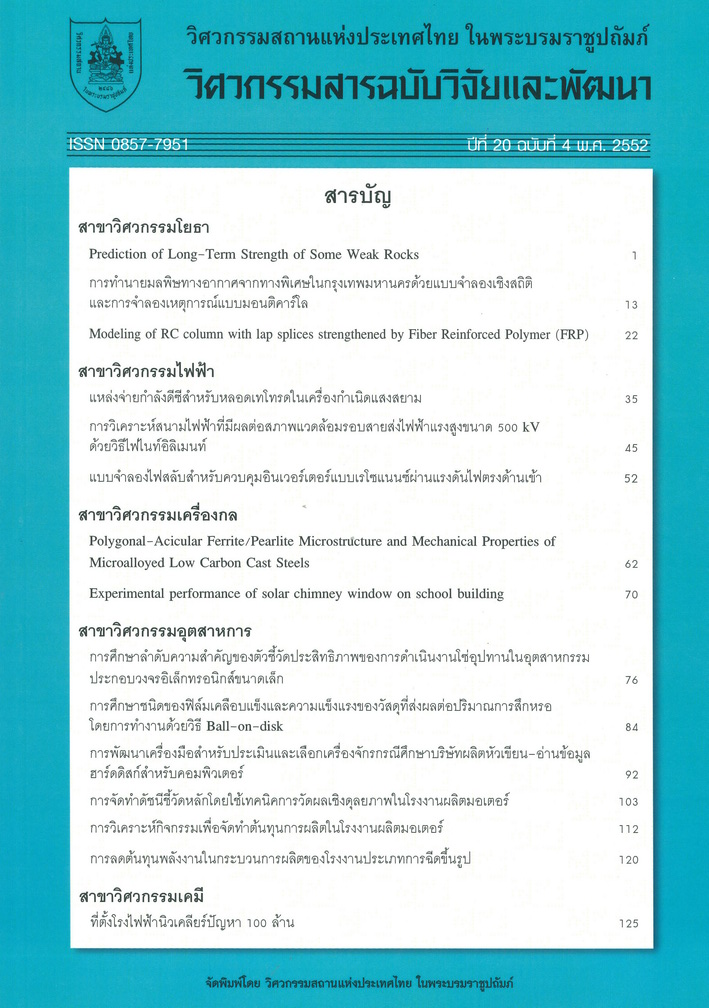การทำนายมลพิษทางอากาศจากทางพิเศษในกรุงเทพมหานครด้วยแบบจำลองเชิงสถิติ และการจำลองเหตุการณ์แบบมอนติคาร์โล
Main Article Content
Abstract
This research is a study of statistical relationship among air pollutants, namely CO, NO2 and O3, nearby an expressway in Bangkok and others relevant factors. This study uses regression analysis method to develop statistical models for predicting the concentration of air pollutants from the expressway. It further analyzes the uncertainty and sensitivity of each model via the Monte Carlo simulation and proposes application examples. Results of the study show that the air pollutants correlate in the same direction with most of the traffic volume variables; and the relationships are nonlinear. The best equations for predicting the concentration of CO, NO2, and O3 have the coefficient of determination, R2 in the range of 0.444-0.797. It was found that the variables from the adjacent Department of Pollution Control’s monitoring station help explaining the variance of pollutant levels near the expressway. Furthermore, the results of the uncertainty and sensitivity analysis indicate that the NO2 prediction models have higher uncertainty than the prediction models of O3 and CO. The sensitivity analysis also identifies the co-factors that have high influence on the prediction of three pollutants; they are: vehicle speed, number of car, NO2 concentration from nearby monitoring station, distance from the expressway, and temperature. The process of model development and analysis of this study can be applied in other expressway pollutant studies or environmental impact assessment of similar projects.
Article Details
The published articles are copyright of the Engineering Journal of Research and Development, The Engineering Institute of Thailand Under H.M. The King's Patronage (EIT).


